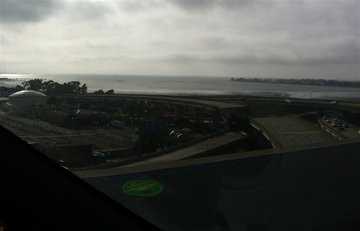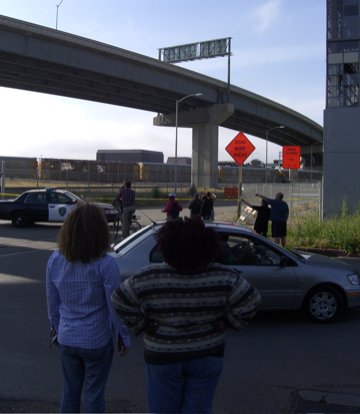My brother John and I were standing on the platform of the MacArthur BART station in Oakland once, years ago. The platform is set in the midst of a big freeway interchange. It’s got a nice view of towering overpasses in one direction. Since it’s elevated and bounced by four lanes or so of traffic on each side, it actually has an open view to the Oakland Hills on one side and out toward San Francisco Bay on the other. With all the traffic, the soaring, gracefully curved highway structures, the trains coming and going, you’re really conscious of how much industry and energy goes into what we build. And more than that, too. Standing there, John said, “These are out cathedrals.” Not that we build our highways to give expression to our understanding of the divine, but these structures somehow embody both a creative urge and give voice to how we see our connection with the world.
Anyway, yesterday, I was out on a short bike ride (to pick up the A’s tickets featured in another post), and took a bike lane that skirts the Maze, the huge tangle of overpasses and ramps that distribute eastbound traffic from the Bay Bridge south toward San Jose, east and south toward Livermore and Stockton and Walnut Creek and Concord, and north toward Berkeley, Richmond, Vallejo and Sacramento. It was a beautiful early afternoon, and what was most striking was the way the highway structures framed the hills and mountains of Marin County.


